Vivo’s sub-brand IQOO, despite not being very popular in the country has taken a fair share in the affordable flagship market with its iQOO 7 and iQOO 7 Legend devices. The company has recently launched its first mid-range IQOO Z3 in the country which quickly has begun to build up a lot of hype around it and there are various reasons for that. For starters, the device is powered by the latest Qualcomm Snapdragon 768G SoC. It is worth noting that the Z3 has to be the first device to feature this chipset and is expected to remain exclusive for a while.
Just like all the previously launched iQoo phones in the country, the device also supports 5G out of the box. And lastly, the pricing! The device is priced at around Rs 20,000 in India and at this price point, the device goes toe-to-toe with the likes of the Redmi Note 10 series, Mi 10i, and Realme X7 series, and others. While the device sounds like a great offering on paper, can the device live up to its hype? Well, to find out the same, we have put the iQoo Z3 to Geekman’s Review Treatment and tested it extensively for more than a week.
What’s in the Box?
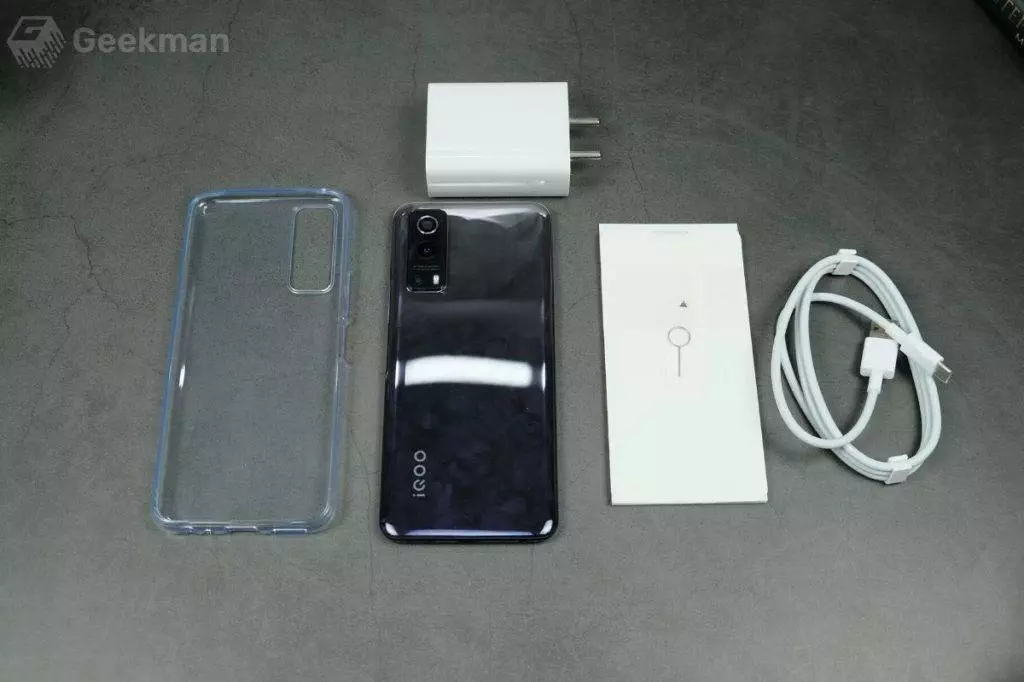
- IQOO Z3 handset
- Protective TPU case
- 65W charging brick
- USB-C cable
- SIM ejector
- User manuals and warranty literature
Design
After staying under the realm for a while, iQoo has enough time to figure out and design its devices. But, the iQoo Z3 looks like a last-minute call. I mean, you are looking at a device that is launched in mid-2021 featuring a teardrop notch, a huge chin, and comparatively thick bezels.
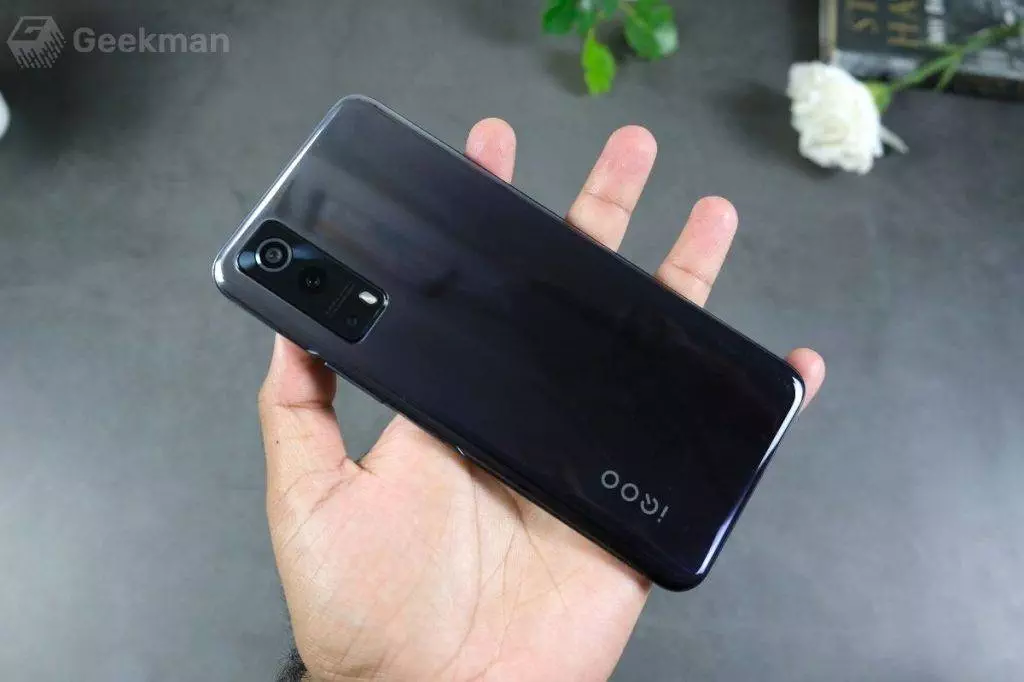
The device features a plastic back and the looks depend on the color you go with. The Cyber Blue variant looks good with a pearlescent finish and is good at not picking the fingerprints. But, our Ace Black variant is a straight-up fingerprint magnet.
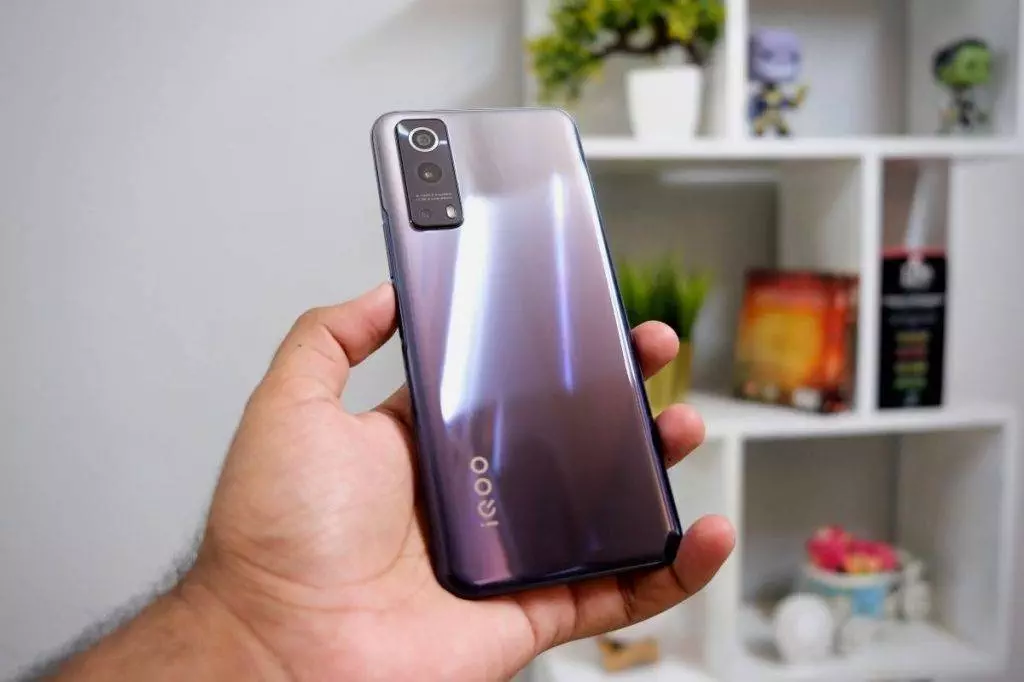
As for the camera module, it is unobtrusive. To make it appealing or for some reason, iQoo has added a silver camera outline to the primary unit which does not look good in my opinion. Also, the module does swell outwards a bit and that makes the device wobble when placed on a desk or any flat surface for that matter. Holding the device in the hand, the weight distribution is great and to my liking and yes, I could use the device one-handed. As for the branding, it is minimal.
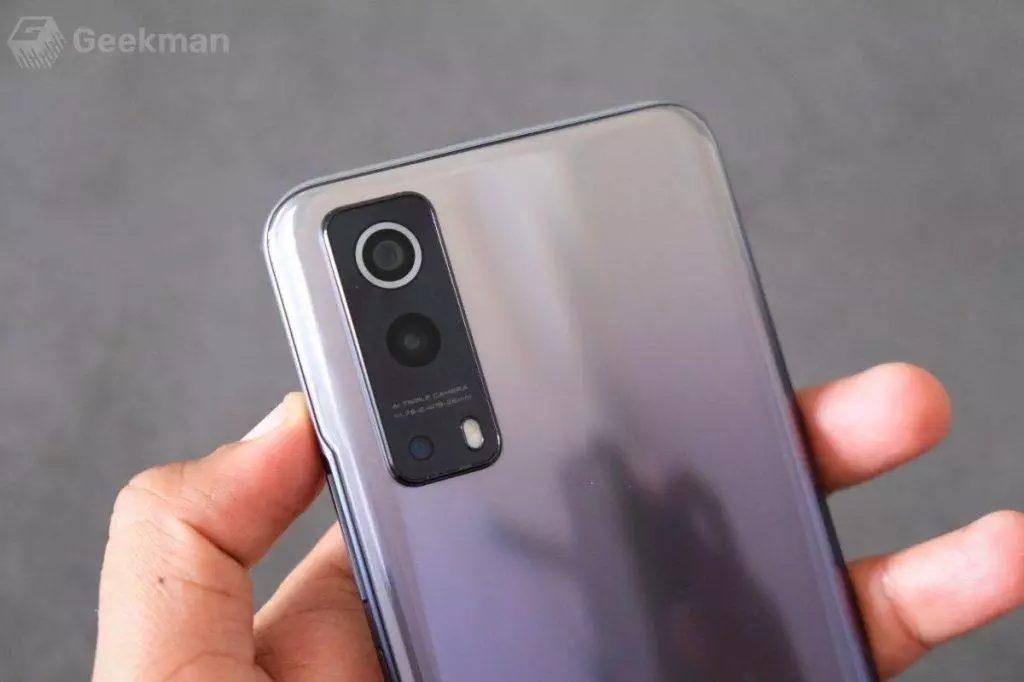
As for the placements, the volume rockers and power key are located to the right of the device. The fingerprint sensor is embedded in the power key and gets the job done. For the headphone jack lovers out there, there is one on the Z3 which is found just beside the Type-C port on the bottom of the device.
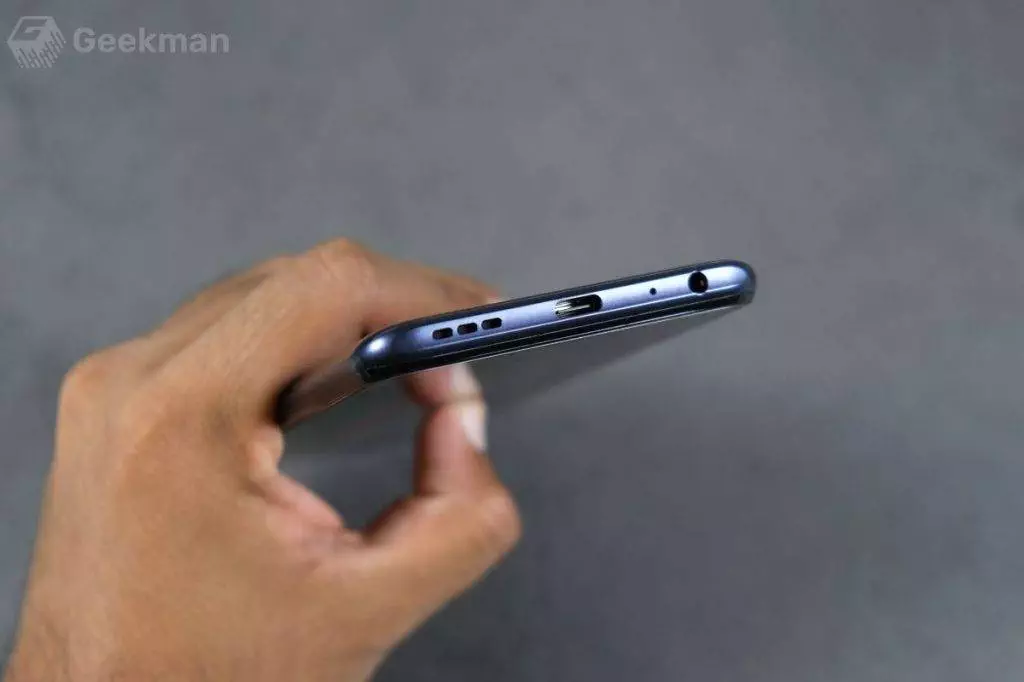

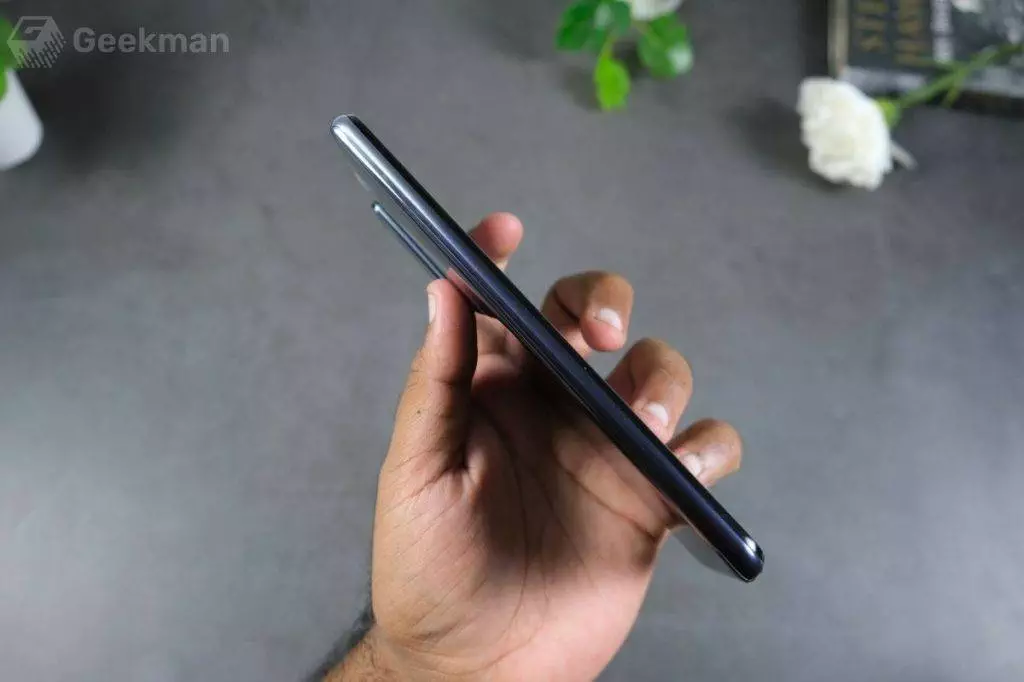
Also, there is a single firing speaker here and that is going to be a let-down for some media consumers. As for the display protection, iQoo has gone with Panda Glass (no pun intended) which is a Gorilla Glass equivalent. Lastly, the device features an IP52 rating. Meaning, the device can survive the occasional splashes and liquid accidents.
Display
The device boasts a 6.58-inch IPS LCD display with a resolution of 1080 x 2408 pixels. The aspect ratio of the display is 20:9 and the pixel density stands at 401 PPI. The display refresh rate here is 120Hz with a 180Hz touch sampling rate. It would’ve been an immense benefit for the device if iQoo would’ve gone with an AMOLED panel but that does not mean that the display here is bad by any means. The brightness levels are adequate, colors are punchy, and viewing angles are just okay. Like mentioned earlier, I could not take my eyes off the teardrop notch and the chin. Dear iQoo, if you are reading this, we are not in 2018!
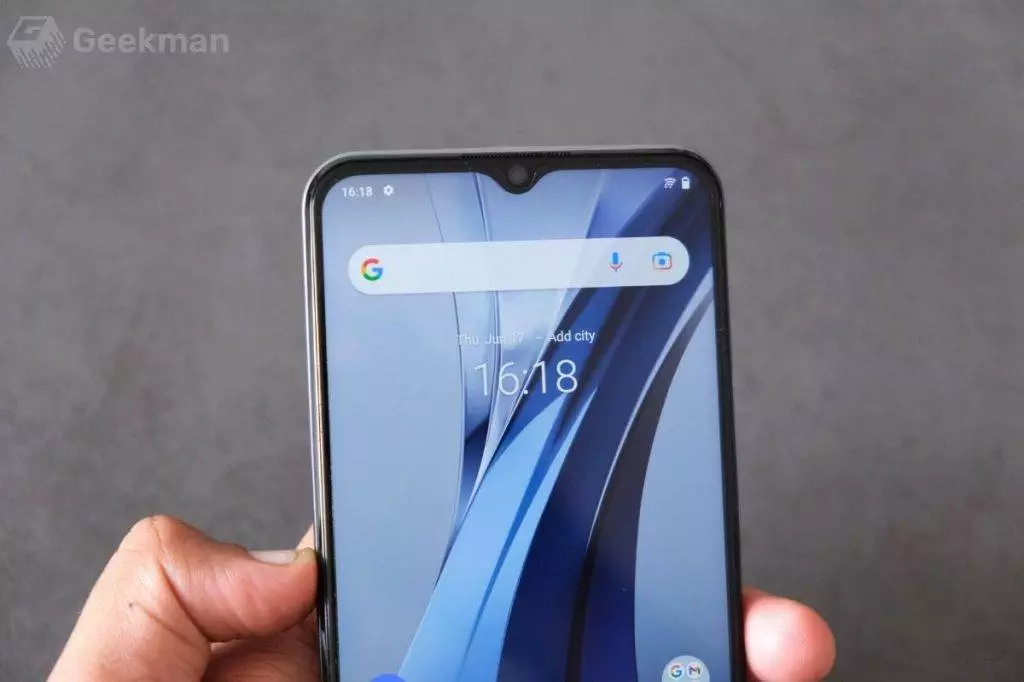
The device is also hyped for its HDR compatibilities and that is not the case when it comes to real-world usage. I have tested it on Netflix and Amazon’s Prime Video. There is no indication of HDR titles or even the content plays in HDR. It is worth noting that the device will allow switching between three refresh rates including 60Hz, 90Hz, and 120Hz. Despite having a touch sampling rate of 180 Hz, the display is not as responsive as marketed but gets the job done.

Performance
With that all out of the way, let me address the elephant in the room here – performance. The performance is one place where the iQoo devices shine and the Z3 is not an exception to that! Featuring the Qualcomm Snapdragon 768G SoC, the device outperforms the competition. It is worth noting that Snapdragon 768G SoC is the upgraded version of the Snapdragon 765G. For those unaware, Snapdragon 765G itself is the finest and powerful mid-range SoC’s out there and is found on the devices like OnePlus Nord.

The Snapdragon 768G on the iQoo Z3 features a Kryo 475 CPU and a faster ARM Cortex-A76 cores clocked at 2.8 GHz rather than 2.4 GHz found on the 765G. The SoC touts 15% improved CPU and GPU performance and outperforms the MediaTek Dimensity 800U, Snapdragon 732G, and 750G SoCs. For those who are interested in benchmarks, the device scored 447106 in Antutu benchmarks which has to be the highest score that the industry has seen from a Snapdragon 700 series chipsets. Adreno 620 handles the graphic duties here and the device is a feast for mid-range gamers.
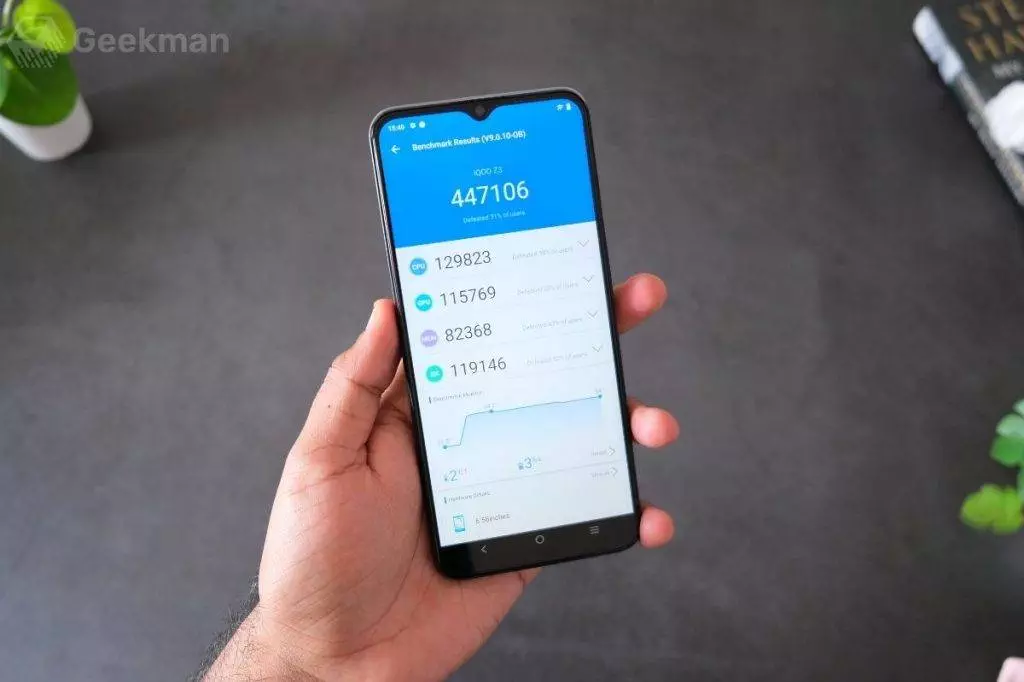
The device can run the games at high graphics and frame rates with stable performance for extended periods. Of course, there are some jitters and frame drops if pushed for extremely long hours of gaming but the device has managed to perform without throttling. That’s a win for gamers. Just like all the previous iQoo phones, the device also comes with a set of gaming features including a Gaming Assistant. I did not see or understand how the Eagle-Eye view is useful on the device except for bumping the vibrance and saturation. It could be just another marketing thing by the company.
Cameras
Gone are the days where you have to spend a lot to get a set of decent-performing cameras. Cameras are being taken care of by brands and have become every buyer’s priority. While the cameras on the iQoo Z3 are not potentially great and the ones that can crush the competition, they are usable. The device features a triple rear camera setup with a 64 MP primary shooter coupled with an 8 MP ultra-wide sensor and a 2 MP macro sensor. I am very glad there is no mono or depth-sensing unit here just to add up the camera count.
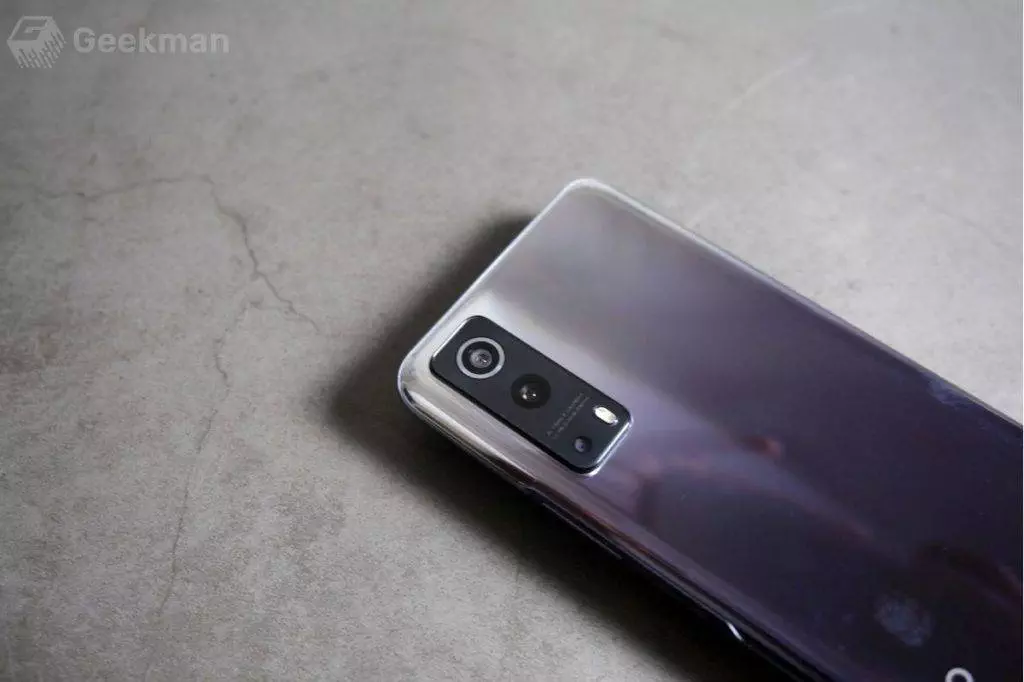
The primary sensor here is a Samsung’s ISOCELL GW3. For those unaware, this is a similar sensor found on the Redmi Note 10 Pro. The sensor coupled with IQOO’s camera optimizations performs reasonably well in broad daylight bringing out the shadows. Of course, this results in an overexposed image, and one can find that when shot an image that contains sky. If you zoom in to the image shot, there is a lot of detail here and luckily there is no over-sharpening going here. Take a note Xiaomi!

Clearly, the smartphone tends to shoot and produce images on the warmer side of the spectrum and struggles to get the white balance right all the time. The 8 MP secondary shooter which is a wide-angle unit gets the job done and there is nothing to brag here. Just like most mid-range phones with wide-angle cameras, the corners or the image fringes and turn out to be softer. The 2 MP macro-sensor is a useless addition in my opinion. If the company wants to add a working macro sensor to the phone, they can achieve that by tweaking the ultra-wide unit a bit. Again, iQoo wanted to add up the camera numbers here and at this point, we understand why brands tend to do that!
On the front, there is a 16 MP selfie-shooter that can produce some high-quality selfies. The details are well preserved, colors are accurate, and exposure is on point. Well, if there is one thing that company could have done better here, that has to be with the portrait mode on both the front and back of the device. The edges tend to blur at times and clearly, there is a lot of iQOO to work on in the portrait department.
For video sample please check the IQOO Z3 review video on our Youtube channel Geekman.
Software
If you are still considering getting the iQoo Z3, this part will change your mind. The device ships with the company’s own FunTouch OS v11 that is grounded on Android 11. Get this, the device ships with a ton of bloatware that cannot be uninstalled too. Not just that, there are ads in the UI and they also take an effect on Google apps like Chrome. And one thing that pissed me off is the privacy on the FunTouch OS. Most of the system apps, including the lock screen wallpaper carousel, require phone and contacts permission to enable or disable. I mean, why would a wallpapering service or application ask you to access your contacts and private information?
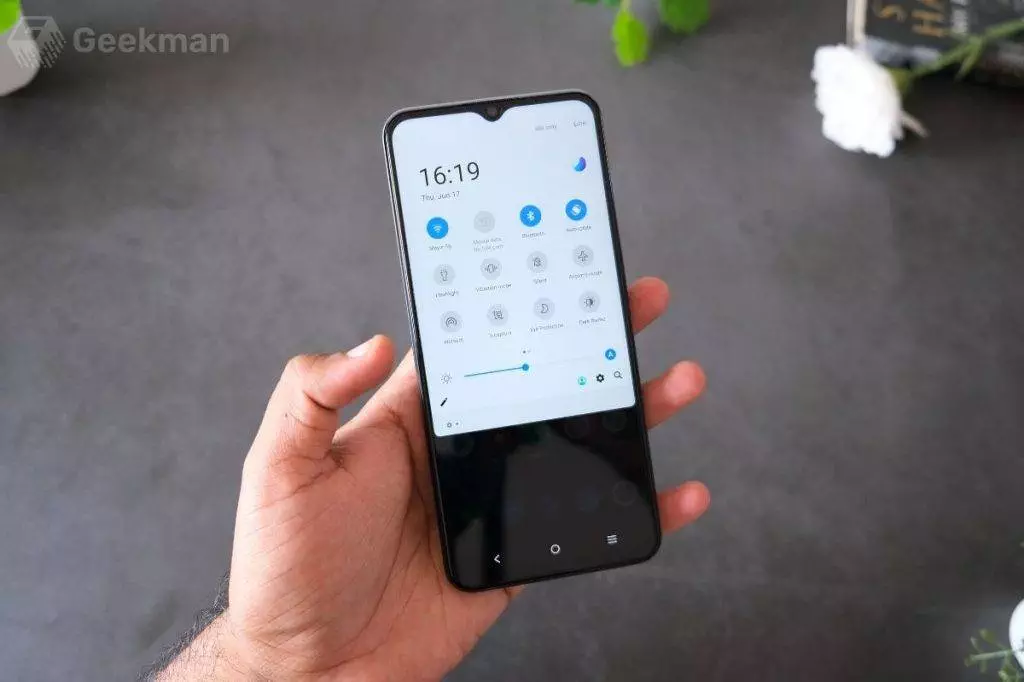
Also, the interface itself is not the cleanest or the fastest one out there. There are not a lot of customization settings and the UI has a lot of half-baked features. Not just that, the UI animations jitter and the interface does not take complete advantage of the 120Hz display. Clearly, there is a lot of room for improvement on the software front.

Battery
The device is backed by a 4,400 mAh battery and comes packed with a 66W power brick. With medium to moderate usage, the device can easily last for a whole day or even two. Even with gaming, you can pull off with a bit of juice left by the end of the day. That being backed with a fast charger, the device can charge to 50% in under 20 minutes and it might take anywhere between 40-50 minutes to fully charge your device. It is worth noting that despite being shipped with a 66W charger, the device can take a maximum of 55W, which is not a bad thing at all considering the charge time is still quicker than a lot of devices.
Verdict
iQoo Z3 is a device with a lot of potential but clearly brought down by one factor that is FunTouch OS. FunTouch OS has to be the major letdown for Vivo devices too, despite having some serious specifications. It is time for Vivo to revamp its UI or at least it’s the right time for iQoo to develop its interface with certain changes on top of FunTouch like Realme did with Color OS. Yes, performance-wise and gaming-wise, the device is one of the best buys, but there are way too many compromises here. We can count the good parts of the device in a jiffy – battery, camera, and performance. But the bad count is huge – display, build, software, auxiliary cameras, and design.
Buy Now:




Also Read:
- Best Smartphones Under 25000 Rs
- Best Phones Under 20000 Rs
- 5 Best TWS Earbuds Under 3000 Rs
- Best Power Banks Under 2000 Rs.








I would like to go with POCO X3 PRO
Thanks Tarun, you just saved my 20000 rs.
Thanks Geekman! for this review. After checking your best phone under 25000 Rs list, I finally bought the Oneplus nord CE. I really appreciate your honest review style!
Always Nice review…..
I always ♥to visit this website before buying any gadgets…